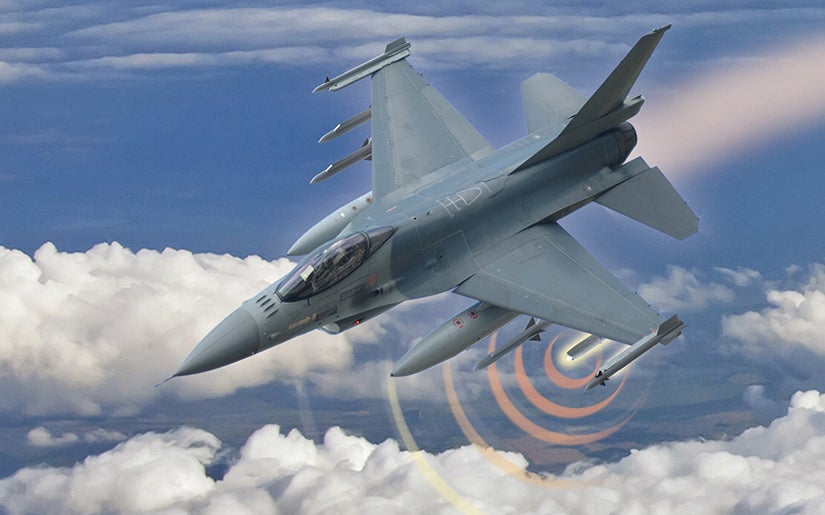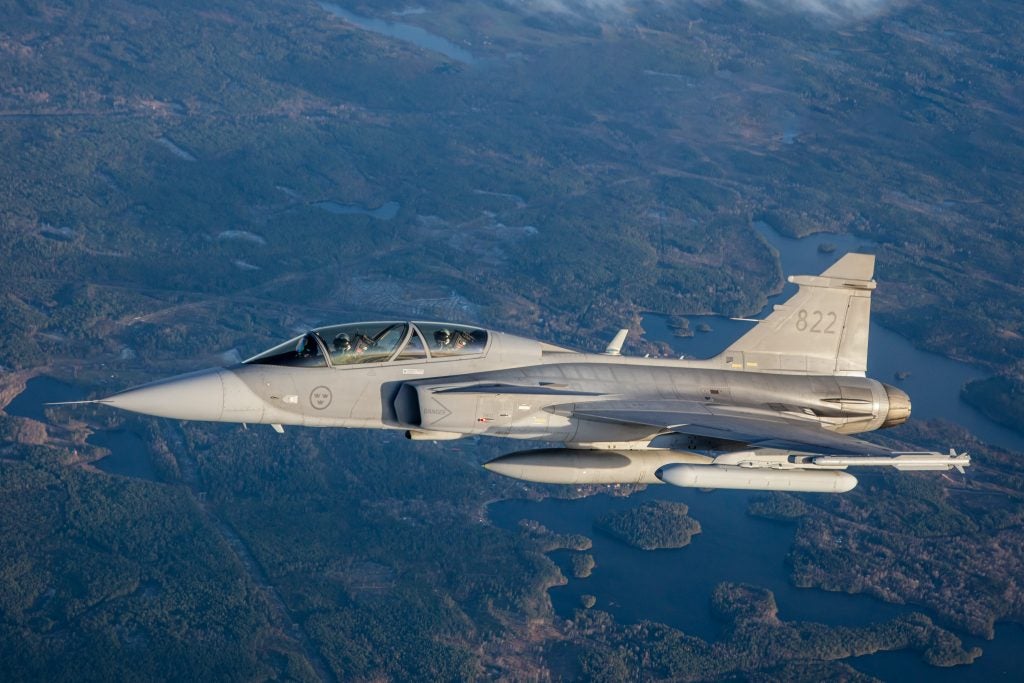In Profile: Airborne Jamming Pods – How to Stay Alive in the Modern Battlespace
Competent electronic warfare capabilities are essential to aircraft survival and effectiveness in the modern battlespace. SAMs and air to air missile are the most apparent threats driving electronic defenses, but radar guided anti-aircraft artillery and various non-fire control radars also must be suppressed for effective air operations to take place.
Onboard jamming suites, such as the obsolete ALQ-165 Airborne Self Protection Jammer, the Russian Khibiny system seen adorning the Flanker family, or the Super Hornet’s ALQ-214 Integrated Electronic Defensive countermeasures suite can go a long way in preventing a combat jet from meeting an untimely end. Their capabilities are limited however, by the need to fit in-between and around all the other things that make up a combat jet, such as engines, fuel tanks, or other mission computers. Size, weight, and power requirements also serve to limit the effectiveness of onboard jamming suites.
Enter the jammer pod. Historically, there were two distinct types, but increasing computer power and antenna design has changed this somewhat. The stand-off jamming pod was typified by the ALQ-99, first carried by the Prowler and Skywarrior, and now by Growler. Today, as the ALQ-99 hits the end of its effective capability life, the Next Generation Jammer (NGJ) is entering early testing to replace it. Initial examples of NGJ have now been delivered to the USN for testing.

Far more common than dedicated stand-off pods, however, are self-escort or self-defense pods. These smaller, more automated, pods beat the stand-off pods into service by a few years. They were standard equipment for American strike aircraft over Vietnam, from F-105s to B-52s. Robin Olds famously made use of some jury-rigged QRC-160 pods, normally carried by F-105s, during Operation Bolo.
Today, this type of pod is probably best demonstrated by the Elta ELL-8200 series of pods, which have equipped the Israeli Air Force, Indian Air Force, and even USAF aggressor forces. Despite a large market share, it is hardly the sole player. The UK’s now-retired Tornados carried the Sky Shadow pod on an outermost wing station. Saab’s Arexis pod is currently designated as a self-escort pod, but that characterization is debatable.
Jamming pods have not been needed for the majority of the sorties flown during the War on Terror. Although Prowlers and Growlers both found themselves heavily tasked during this time, this work was for their other capabilities. The overwhelming majority of insurgent and terrorist groups that have been fought in the last eighteen years did not have any radar sets to speak of. Operation Odyssey Dawn, the air war against the Gadaffi regime, showed that the need for electronic warfare capabilities could arise at nearly any time. Only the French-flown Dassault Rafales engaged targets without support from Growlers, due entirely to their confidence in the SPECTRA self-defense suite.
If sometime in the near future, two or more countries with modern air defenses and modern air arms go to war, electronic warfare capabilities will determine a great deal of the war’s outcome. Cheaper than the aircraft that carry them, and with greater power and range than integrated defensive EW suites, jamming pods of any and all kinds will likely feature front and center in this hypothetical air war.

